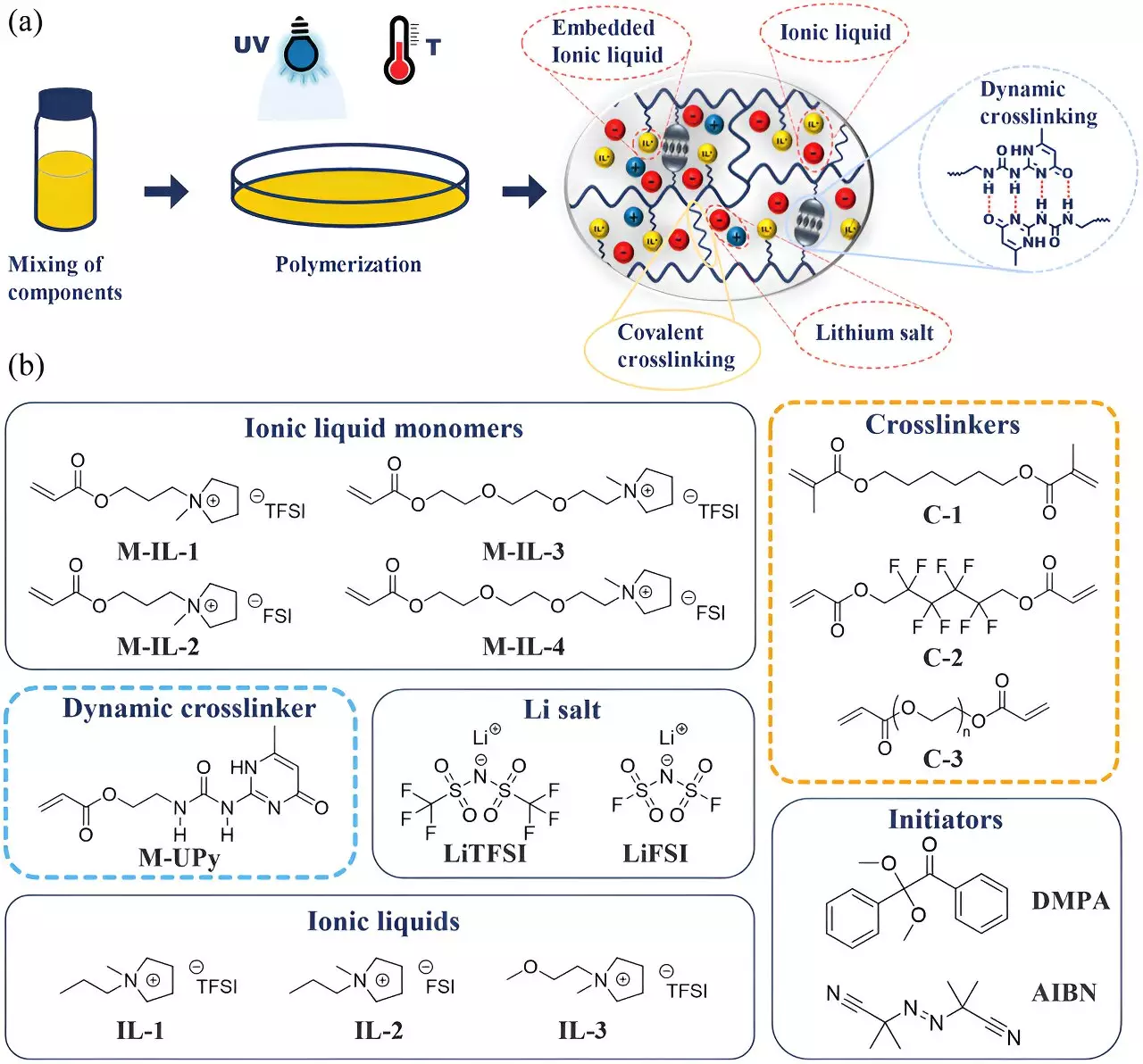The quest for safer and more efficient energy storage solutions is a pressing concern in today’s technology-driven landscape. Recent advancements from the chemists at Martin Luther University Halle-Wittenberg (MLU) offer a fresh perspective on enhancing lithium-ion battery performance. These researchers have introduced a new gel-based electrolyte designed to mitigate the risks associated with traditional liquid electrolytes, which are notorious for their flammability. This innovation not only holds the potential to avert catastrophic failures but also promises improved battery longevity and efficiency.
Lithium-ion batteries, the backbone of numerous devices ranging from smartphones to electric vehicles, have garnered a reputation for their high energy density and rapid charging capabilities. However, the flammable nature of the liquid electrolytes poses significant hazards, particularly if the battery is compromised. As Professor Wolfgang Binder articulates, the volatile components of conventional electrolytes can lead to dangerous situations, including fires and explosions. The development of the new gel technology aims to address these critical safety concerns while maintaining battery efficacy.
The innovative gel electrolyte created by MLU’s research team comprises a polymer with a gel-like consistency. This design cleverly binds the electrolyte, while still allowing ions to move freely between the electrodes. Dr. Anja Marinow points out that this novel approach merges the fluidity and conductivity typical of liquids with the durability and thermal stability characteristic of robust polymers. The result is a product that not only enhances safety but also promises to improve the overall performance of lithium-ion batteries, providing a dual benefit that the industry has long sought.
While similar gel-based solutions exist, particularly in applications like motorcycle starter batteries, the integration of this gel into the lithium-ion domain represents uncharted territory. A noteworthy challenge has been to replicate the protective layer formed by traditional liquid electrolytes when a battery is initially charged, a crucial element for optimal battery performance. However, the MLU team has successfully addressed this issue by embedding ionic scaffolding within the polymer’s molecular structure, allowing the gel to stabilize while enhancing ionic mobility.
Early lab tests of the MLU-developed gel electrolytes have revealed promising results, particularly concerning their voltage stability. Typically, conventional lithium-ion cells become unstable beyond 3.6 volts; in stark contrast, the new gel electrolytes maintain their integrity at voltages exceeding 5 volts. This elevated voltage tolerance could dramatically enhance battery performance and reduce the frequency of dangerous failures, making the technology not only safer but also more efficient.
In response to the growing need for sustainable practices within the battery industry, the researchers have also prioritized the recyclability of their gel electrolytes. Designing materials that can be efficiently recycled addresses an essential aspect of modern manufacturing: environmental responsibility. Although extensive long-term studies are necessary before these gel batteries can be scaled for industrial production, the foundation laid by the MLU team signifies a crucial step towards a more sustainable circular economy.
The groundbreaking work of MLU forms part of the “BAT4EVER” initiative, a collaborative project involving multiple universities and research institutions across Europe. This extensive framework aims to pursue further research, particularly with regard to sustainable battery solutions. The establishment of the “European Center for Just Transition Research and Impact-Driven Transfer” at MLU will not only facilitate ongoing research but also drive innovation focused on balancing technological advancement with social and ecological demands.
The emergence of gel electrolytes in lithium-ion battery technology could herald a transformative period for energy storage systems. By integrating advanced materials that enhance safety, performance, and sustainability, researchers are poised to redefine the landscape of battery technology. As the potential for more comprehensive testing and industrial application unfolds, the promise of gel electrolytes paves the way for not only better batteries but a safer and more sustainable future for energy storage.

